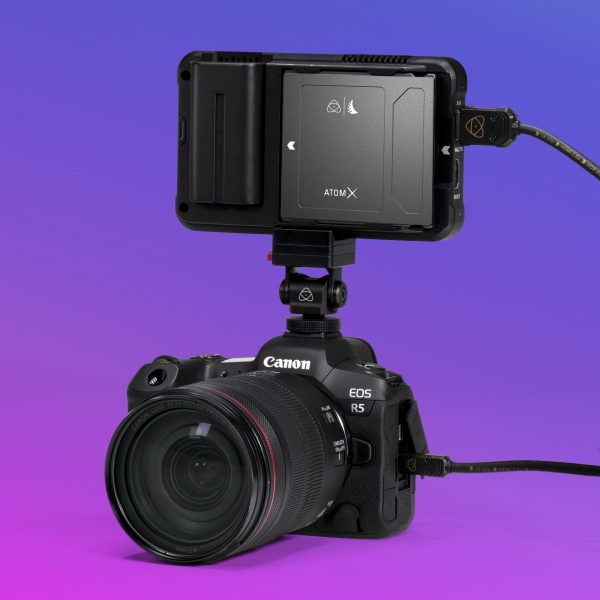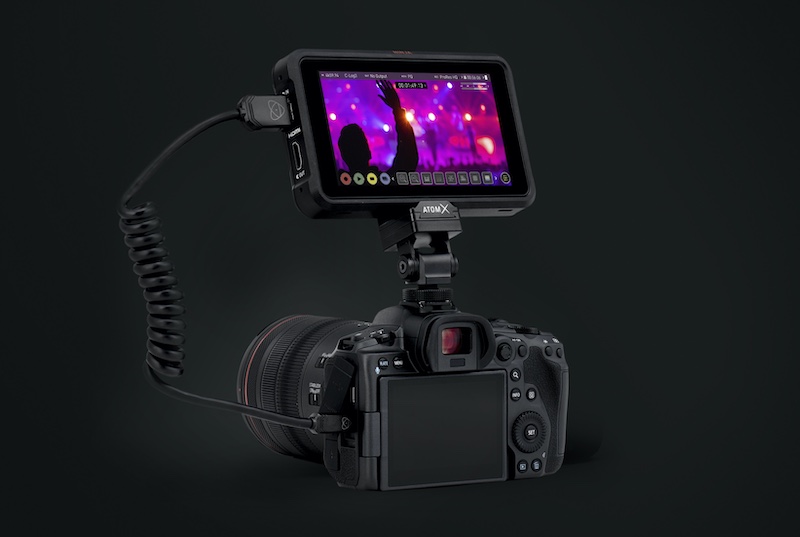

- #Atomos ninja v canon r5 manual
- #Atomos ninja v canon r5 pro
- #Atomos ninja v canon r5 iso
- #Atomos ninja v canon r5 plus
To test this all out, and take advantage of 60 fps, I looked for scenes with motion - water, people birds. The 10bit ProRes RAW clips, however, edit easily and smoothly in Final Cut Pro, even on my 8 GB MacBook M1 AIR. The third issue (for me) is that you cannot edit the clips in DaVinci Resolve. And there is no lag in the recorder response. Shooting this way (using the camera’s record button) did not result in any overheating, since the internal recording is not one of the high-heat modes. Atomos should make a recorder without a screen - it would cost less and it would last longer - lighting up a 1000-nits screen must really tax power. So, I shot using the camera’s record button and the camera’s LCD, ignoring the Ninja V+ entirely. This is not acceptable when you need to start and stop instantly and every second of the shot counts. The difficulty is that you need to take your hand off the camera/Ninja to push the screen, resulting in a shaky start to the clip if you are not using a tripod. You can also start recording on the Ninja using the record button on the camera, and it will record both on the Ninja and on the internal card (in 4K60 IPB). I have no problem viewing the LCD on the camera in bright light, so the 1000 nits Ninja screen is not useful.Ī second issue is that to avoid overheating and the recording limit you need to start a clip by pushing on the Ninja screen. The Ninja V+ has many focus aids, but you cannot set the focus even though it is a touch screen.
#Atomos ninja v canon r5 iso
To see the aperture and ISO and to place the focus point I need the camera’s LCD.

#Atomos ninja v canon r5 manual
I shoot manual exposure with auto ISO and use a variable ND. I found having the extra screen worthless. This is a great lens for crop mode, btw, as you get a 38-380mm span. I shot for a few hours (in high heat) never putting the “rig” down with the heavy 24-240 RF Canon lens.

The added weight does in fact help stabilize, and it is not so heavy as to tire you out (or at least me). However, a big battery on the Ninja V+ gives you over 40 minutes, which is about what you can fit on a one TB SSD, so it is not a concern. And it adds concern about battery life, since now there are two batteries.
#Atomos ninja v canon r5 plus
Obviously, the Ninja V+ plus battery adds bulk. Of course, you can down-sample in post to 4K UHD or 4K DCI. The resolution is 5120 x 2700 (17:1), so it matches with 8K DCI RAW. The upside of this is there no pixel binning or line skipping. The downside is that this is in crop mode (1.6X). So, if one is after the most realistic motion while shooting RAW and high resolution this is an advantage. You cannot shoot this internally (there is only 4K 60p All-I and IPB). So, what does the Ninja V+ offer in terms of new capability? 5K 60 RAW.

#Atomos ninja v canon r5 pro
The 12bit RAW internally-recorded files are easy to edit in either Resolve or Final Cut Pro - your choice. And I can get 12bit RAW, not 10bit RAW that the recorder produces. So, the Ninja V+ use for my 8K Raw shooting is, well, useless. With this technique, I can shoot 8K 12bit RAW for many hours in the hot sun and not get stopped by the overheating timer. When I shoot in 8K RAW internally, I shoot in very short takes and turn off the camera between shots when possible (the camera turns on and off very quickly). My review is about using the combo of the Canon R5 and the Ninja V+ for handheld shooting - no mounting on a tripod. So, if you need long takes (interviews, concerts) and your camera is placed on a tripod, you now can shoot in 8K 10bit RAW and not worry about heat. First, as shown here:, with the Ninja V+ your 8K RAW video shooting will not be limited by overheating or by the 30-minute limit - just by battery life and the size of the SSD.


 0 kommentar(er)
0 kommentar(er)
